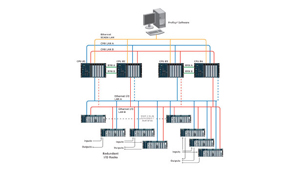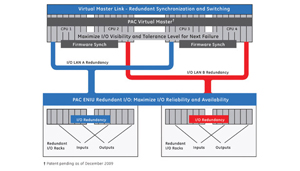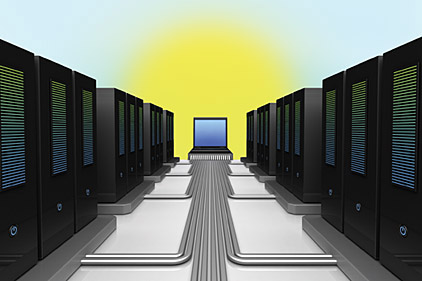As the information economy develops, the infrastructure to support it continues to expand. Substantial investment has been made in the networks and systems that collect, manage, deliver, and store data. The growing trends of cloud computing, platform as a service (PaaS), and software as a service (SaaS) have enabled IT-centric businesses to thrive and develop business models that rely entirely on information flow. The systems that process the information are critical to these new business models. When information systems go down, there are dramatic effects on the businesses that rely on them.
According to the Electric Power Research Institute, companies in some data-intensive industries can lose as much as $6.45 million per hour of downtime, and a research report from Oracle states that for large companies, a gain of just one percentage point of availability is worth $7.36 million per year. Even at an average-sized company, one hour of downtime can cost $10,000, translating to a loss of $3.68 million per year with a 5 percent system availability loss.

|
|
Quad redundancy provides two mirror-imaged pairs of redundant controllers, whereby one of the four controllers can back up any of the other controllers in the system. |
As costs for system disruptions continue to soar and information increases exponentially in volume and importance, some companies—particularly those that are web-based, customer support-focused, or security-focused—simply cannot afford downtime. They increasingly share the same demand: to ensure the highest level of system reliability and availability at the control layer, which is the heart of any backup power solution.
Quad-redundancy is the new revolution in system availability for parallel-power applications. A traditional redundancy control system passes control from an active system to its backup system at the moment failure occurs. Incorporating a backup scheme like this requires the purchase and installation of double the number of individual system components. The system controls a single process using two real-time synchronized CPUs. The active CPU provides process control and simultaneous synchronization of the backup CPU; if a failure of the active CPU is detected, the backup CPU is switched into the active mode, which takes control of the whole process. Essentially, the principle is to have one backup to ensure continuity of operations without disruption.
By contrast, a quad-redundancy control system has four redundant controllers—a master controller and three synchronized backup controllers. It leverages an Ethernet-based I/O that can seamlessly arbitrate its I/O control from one of the four controllers. If the master controller or any of the system and/or remote I/O components fail, the system snapshots the remaining system, including its remote I/O; performs system availability calculations; and finally identifies the best backup controller to take over system control and provide the remaining system the most capability to withstand the next sequence of multiple or cascaded system failures.
A quad-redundancy control system addresses the increased demand for more redundancy with higher speeds, real-time communications, and deterministic data transfers—driving maximum system availability in applications where it is critical.
To handle the information economy, data centers play an important role in keeping information flowing. Large e-commerce, 24x7 banking, and search engine sites have thousands of transactions per second flowing through their data centers—even a minute of downtime would be disastrous. The need for uptime in data centers will increase to not just the large players, but also everyone who needs quick, reliable data.
The need for continuous uptime is not limited to online ventures, however. Control systems are the heart of many 24x7 mission-critical systems, for example, emergency power in hospitals where even a short downtime can be devastating. Power grids for cities, homeland security applications, and all other processes where any interruption in power or flow of information causes major disruptions or catastrophic loss are candidates for a quad redundancy solution.

|
|
Functional block diagram |
Quad redundancy consists of two redundant pairs of high-end controllers working in unison, for a total of four controllers and their associated items (racks, power supplies, etc). The controllers in the pairs are connected via redundant high-speed fiber optic modules, which provide synchronized logic solving and data transfer between the controllers. Similar technology is used via network hubs to tie all four controllers into a cohesive quad-redundant solution.
While the previous generation of critical-power delivery applications such as paralleled switch gear involved a mirror-imaged mechanical backup architecture with generators, the quad-redundancy control systems provide two mirror-imaged pairs of redundant controllers, with the unique capability that any one of the four controllers can back up any of the other controllers in the system. There are always three complete levels of backup, which is different than what most offerings refer to as “redundant redundant,” whereby the solution does not synchronize the two pairs. They operate independently and are only capable of controlling their side of the mirror image; they do not back each other up and are not synchronized.
In contrast, the quad-redundancy solution can provide full control of either side or both sides of a critical power delivery application, even with a redundant pair completely out of service. Furthermore, whereas traditional redundancy systems pose a risk for system designers with only a single backup when one of the controllers is down for maintenance, the quad-redundancy architecture allows complete maintenance shutdowns of one side of the mirror, including the controls—while retaining the added security of multiple level system backups.
With quad-redundancy control, companies can rely on the highest level of availability at all times for maximized uptime, reduced costs, and improved performance—all of which drive the bottom line as well as customer satisfaction.
With the rising criticality of information to companies, and the value it provides in today’s information economy, the impact of system downtime can pose extremely prohibitive financial and operational risks. Companies are increasingly seeking ways to ensure the highest level of system reliability and availability at all times through continuous control of their backup systems.
At the forefront of this emerging need are quad-redundancy control solutions—the next generation of control system redundancy. The unique and innovative approach virtually eliminates downtime risk—enabling companies to protect against lost productivity and profitability for a sustainable competitive advantage.



